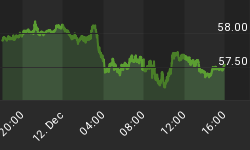Despite making loud headlines about stimulating the economy, the US government has been unable to raise the level of optimism among the general public, while the stock market seemed to drop into a deep state of apathy.
Last week we received the long-awaited economic stimulus packet as well as the so-called plan for the rescue of the US financial system. We have already voiced our skepticism regarding the structure of the stimulus and its potential effect on the economy in a prior article.
As far as the size of the $787 billion package, it is clear that it is too small and too spread out into 2010 and beyond to be called a stimulus. $787 billion is just 5.6% of the GDP and when spread over two years will account for just 2.8% at a time when many industrial economies around the world are contracting by 5-10% per year. It can only be called a life support package, not a stimulus.
Japan, which got into a deflationary spiral as a result of a real estate bust, spent much more than 100% of its GDP since 1991 just to see its economy stagnate. Construction related investment alone ate up $6.3 trillion of public funds over the 17 years since 1991. Infrastructure spending accounted for $350 billion to $400 billion per year for the first half of the 1990s for an economy half the size of the United States.
The results of the Japanese fiscal stimulus were unimpressive, although it could be argued that without this stimulus, it could have been much worse.
With the United States facing similar post bubble dynamics as Japan did twenty years ago, how can we expect greater effectiveness of the Obama stimulus plan when it is insufficient and much of is clearly misdirected?
In reality, this economic stimulus package has to be viewed as only the first one of many yet to come. By having the US dollar as a world reserve currency, the US government can be much more effective than its Japanese counterpart in printing its own currency.
We will soon be quantifying the size of the government stimulus plans in trillions rather than in billions. Within the next 3 to 4 years, government spending can easily reach $10 trillion, doubling the size of the US government debt.
One of the main problems with this crisis is that the majority of the debt bubble is related to the residential real estate which does not produce cash flow but only seems to eat it up. As home prices decline and unemployment rises, debt serviceability is worsening dramatically.
In order to avoid social unrest and to maintain popularity, the Democratic majority will face two realistic options which could begin to address the economic disaster:
-
Forgive portions of mortgage debt which cannot be serviced. But who will pay for the losses - clearly not the weak banks. Uncle Sam would pick up the tab by printing more currency.
-
Print new dollars to increase the nominal income of the indebted population through tax cuts, job creation, jobless benefits and various social spending.
There is no other politically possible way out of this mess other than to run the printing press. The way of the free market via bankruptcies is not popular so there is no sense to even discuss it.
Within hours President Obama will sign the stimulus into law but we are sure that this is just the beginning of the government spending campaign.
As far as the US banks, the new US Treasury Secretary seems to be mimicking his predecessor, Hank Paulson. The essence of the announced "plan" is as follows: "We are absolutely sure that we will save our banking system, but are yet unsure of how we will do so. We will find out very soon, however. Stay tuned".
While not knowing what to do with the banking system, the government is trying to temporarily act as one. The only specific point in Geithner's announcement is the plan to increase the Term Asset-Backed Securities Loan Facility (TALF) facility from $200 billion to $1 trillion. This joint initiative with the Federal Reserve expands the resources of the previously announced but not yet implemented TALF.
In essence, TALF will support the purchase of loans by providing the financing to private investors. In theory, this should help unfreeze and lower interest rates for auto, small business, credit card and other consumer and business credit. Treasury will use $100 billion to leverage $1 trillion of lending from the Federal Reserve. The TALF, which will potentially have greater effect than the stimulus plan passed in a blink of an eye without any debate.
The markets around the world have deteriorated in deep state of indifference to the first round of actions of the new US government. Only gold is starting to demonstrate its trust in the Democratic majority. Since the inauguration, investors poured $6 billion into gold purchases through GLD alone. This is an increase of 210 tonnes in gold holdings or 24% in less than a month.

Huge investment demand around the world has put an end to a steep gold correction of the second half of 2008. Most intermediate and long term technical indicators for gold have turned decisively bullish. A test of new highs by gold is very probable this spring.

In sum, gold investors are starting to believe that the Obama Administration sees one way out of economic problems which will for sure resurrect inflation.
















